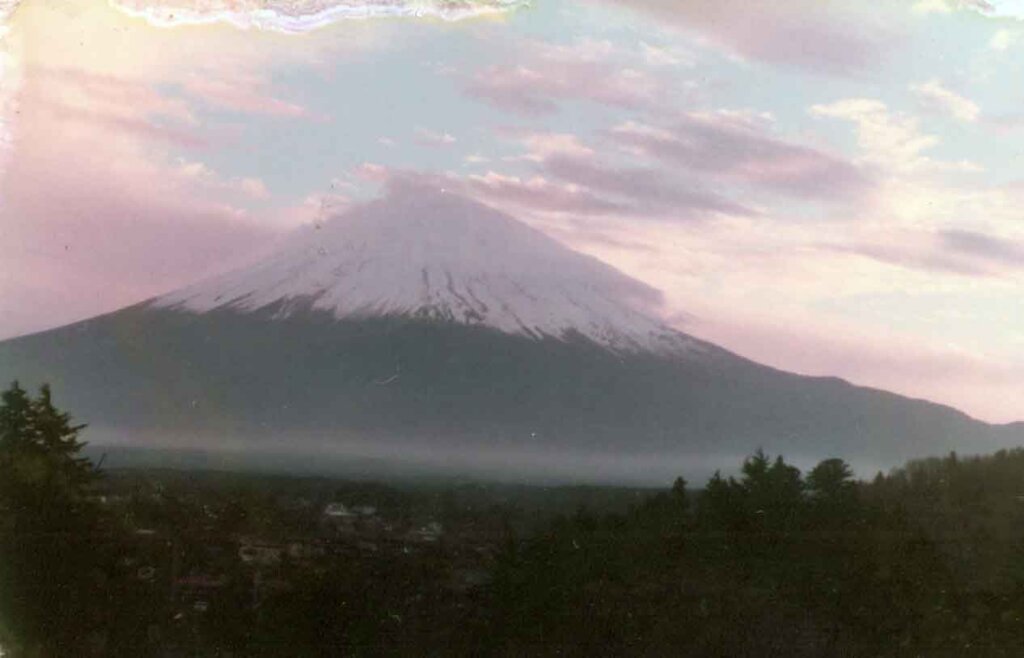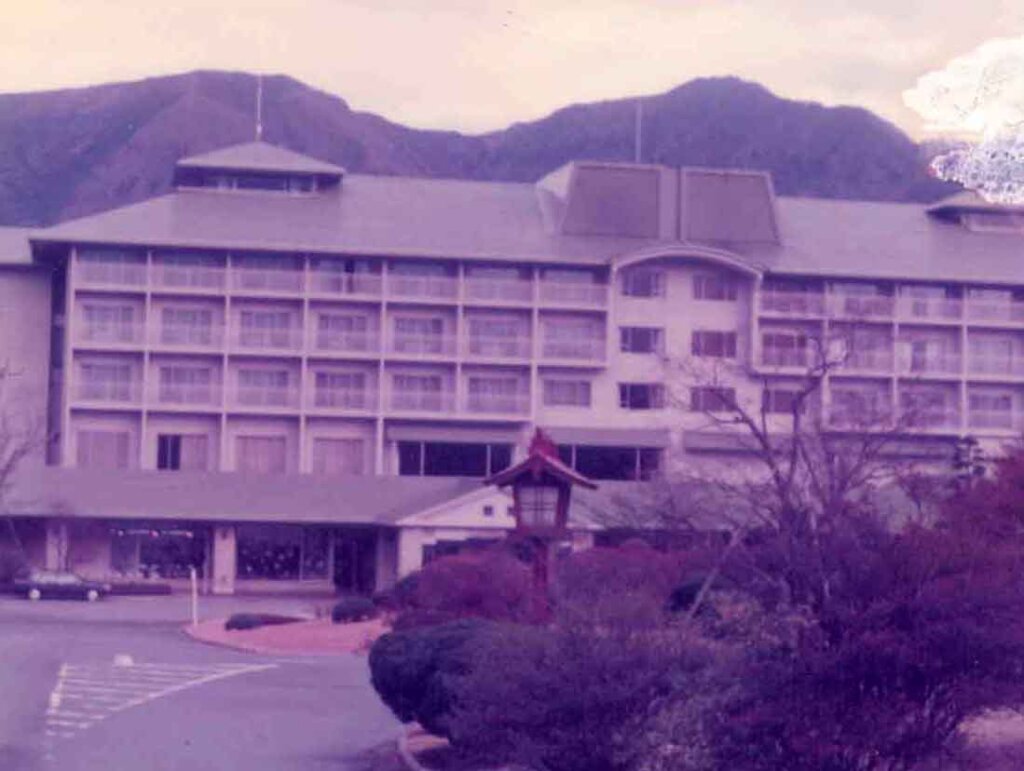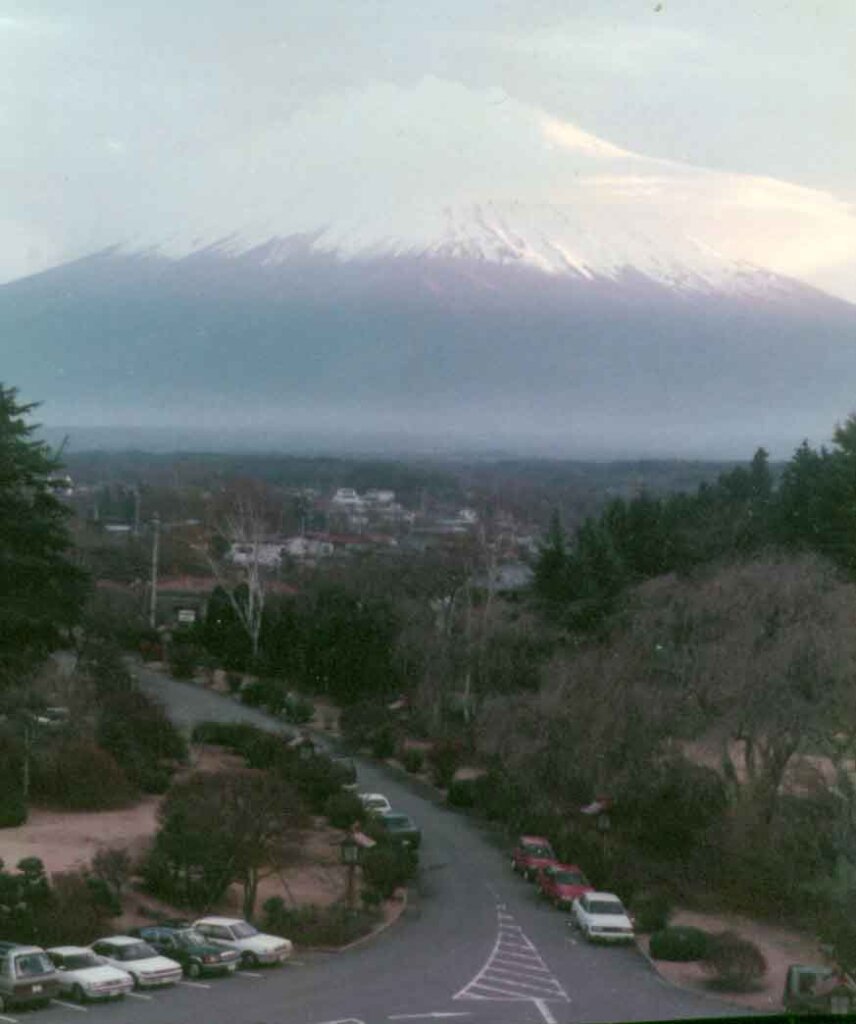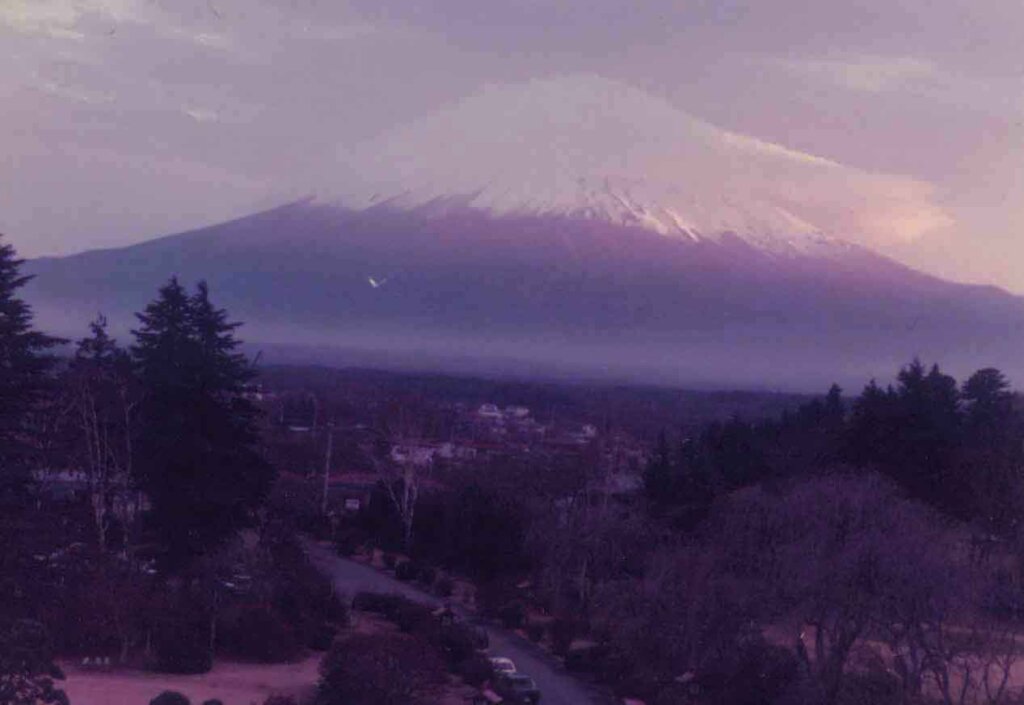Going Solo in Japan 16 – Mt.Fuji Last Updated: January 11, 2024

For whoever going to Japan, Mt. Fuji or Fujisan as popularly called in Japanese, is a big attraction.
Mount Fuji is not part of the Japanese Alps. It is a solitary peak like Mt. Kilimanjaro and is not considered part of any specific mountain range within the Japanese Alps. While the Japanese Alps offer their own spectacular scenery and hiking opportunities, Mount Fuji is a distinct and iconic mountain with cultural and symbolic significance in Japan. Mount Fuji is easily accessible from Tokyo and other major cities. The Fuji Five Lakes region and Hakone, a hot spring resort area, are common bases for those wanting to explore and view Mount Fuji.
Fuji is an active stratovolcano, and its last eruption occurred in 1707-1708 during the Edo period. Despite being classified as an active volcano, it is considered to be in a dormant state.
Mount Fuji was designated as a UNESCO World Heritage Site in 2013 under the cultural category. It was recognised for its cultural, artistic, and spiritual significance.
Our First visit
Next when we were going to Japan for a conference in Tokyo held in month of December, we made plans to go to Mt. FUJI.
The most popular place for accessing Mount Fuji is lake Kawaguchiko. Our travel arrangements were made by a friend.
On this visit we stayed at Fuji View Hotel. Over looking Mount Fuji and Lake Kawaguchi, Fuji View Hotel has one of the best location. A path along beautiful garden would take us down to lake.



We had a room where we could see Mt. Fuji. from our balcony.
There was very little snow only at the top. We took a bus ride may be up to station 4 or 5. The road was covered with broken stones.
Whether viewed from a distance or climbed to its summit, Mount Fuji continues to captivate people with its majestic presence and cultural significance.
Later on whenever we were going to Japan in early winter we made plans to go to Mt. Fuji.
After a 9 year gap we agin had a chance to visit Mt. Fuji.
Our Second Visit
Our second visit was several years later. The conference was on Shikoku Island, far away from Tokyo but since we were going during winter, we decided to visit Mt. Fuji again.
This time we couldn’t get a room at Fuji View hotel and stayed at a hotel right across the lake Kawaguchiko. It was a very modest hotel. As we entered we were a little disappointed. But the owner took us to a room right at the back of the hotel. And when he opened the curtain of the window Mt. Fuji was in full view.
He was a very helpful person and would drive us to Fuji view hotel for our lunch. Again come back to pick us up. So we had best of the both worlds.
It was very very cold and we couldn’t much walk around the lake. We went to the tourist centre to find out how we may be able to go up the mountain. We didn’t have our own car but a Japanese gentleman was going to take us in his car as far up as possible. Many people had gathered here looking to drive up further but suddenly an announcement was made that road was closed as it was not safe. Alas we couldn’t go up. But the mountain was fully covered with snow. Alas, we couldn’t go any further.
There are other interesting sites to be enjoyed in this area.
Five Lakes Region:
This is a region, at the base of Mount Fuji.
The Five Lakes (Fuji Five Lakes) region, includes Lake Kawaguchi, Lake Yamanaka, Lake Sai, Lake Shoji, and Lake Motosu. These lakes provide most stunning views of Mount Fuji. The lakes are popular for recreation and offer reflections of the mountain on calm days.
Lake Kawaguchi
Lake Kawaguchi, often called Kawaguchiko, is a beautiful lake near Mount Fuji in Japan. It’s like a big, calm pond surrounded by nature. People love to visit because it’s easy to get to and has amazing views of Mount Fuji. You can take a boat on the peaceful water, relax in hot springs, and visit parks and museums nearby. The northern side of the lake is the best spot to see Mount Fuji, and it’s so stunning that it feels like a dream. It’s a favorite place for both locals and visitors who want to enjoy the beauty of nature and the iconic mountain.
The most famous of the Fuji Five Lakes, Lake Kawaguchi is the second largest lake in the area and is located at the lowest elevation. It’s a popular starting point for climbing Mount Fuji and offers views of autumn leaves in the fall.

Our Last visit
One more trip to Mt. Fuji was from Shizuoka. I had become good friends with the wife of the Cardiologist. She was very friendly and would receive us at the station always wearing a kimono. So after finishing one day’s work at the hospital she drove us to Mt. Fuji. Travelling by car was very enjoyable. Knowing we are vegetarians she had packed up our lunch of sandwiches and fruits. We stopped by the lake side for lunch. After that she drove us around places near bye which were interesting tourist attractions that I had never known.
Oshino Hakkai
Oshino Hakkai is a tourist attraction located near Mount Fuji in Yamanashi Prefecture. It consists of eight ponds, and “hakkai” means eight seas in Japanese. .
A picturesque village with eight ponds that are fed by melted snow from Mount Fuji. The village is known for its scenic beauty, traditional thatched-roof houses, and its clear ponds. People walk around these ponds and drop coins in the water.
The ponds are surrounded by thatched-roof houses, creating a picturesque setting.
As of my last knowledge update in January 2022, I’m not aware of any specific information about “Oshino ponds.” However, there is a possibility that this refers to the Oshino Hakkai (忍野八海) in Japan.
Oshino Hakkai is a tourist attraction located near Mount Fuji in Yamanashi Prefecture. It consists of eight ponds, and “hakkai” means eight seas in Japanese. These ponds are fed by snowmelt from Mount Fuji and are known for their clear, spring water. Each pond has its own unique characteristics and is often named after a specific quality, such as purity or sacredness.
The Oshino Hakkai area is a popular destination for visitors who want to experience the natural beauty of the region and explore traditional Japanese culture. The ponds are surrounded by thatched-roof houses, creating a picturesque setting.
Shiraito Falls (Shiraito no Taki): Located at the southwestern foot of Mount Fuji, Shiraito Falls is renowned for its striking beauty. The waterfall consists of multiple streams of water cascading down a cliff, resembling a “white silk thread” (hence the name “Shiraito,” which means “white threads”). The falls are surrounded by lush greenery, creating a picturesque setting.
Shiraito Falls (Shiraito no Taki) is a stunning waterfall located at the southwestern base of Mount Fuji in Fujinomiya City, Shizuoka Prefecture, Japan. It is one of the most famous and picturesque waterfalls in the region. Here are some key features and details about Shiraito Falls:
Shiraito Falls is renowned for its unique appearance, characterized by a wide curtain of water that spreads out over a cliff face. The water descends in multiple streams, creating a beautiful and delicate “curtain” effect. The name “Shiraito” translates to “white threads,” referring to the resemblance of the falling water to strands of white silk.
The waterfall is fed by the melting snow and ice from Mount Fuji. The water flows from underground sources and emerges at the cliff face, creating the picturesque cascades.
Shiraito Falls has a height of approximately 20 meters (65 feet), and the width of the falls spans about 150 meters (500 feet). The broad and symmetrical nature of the falls contributes to its unique beauty.
The waterfall is set in a scenic natural environment, surrounded by lush greenery and forests. The area around Shiraito Falls is well-maintained, with walking paths and viewing platforms that allow visitors to enjoy different perspectives of the falls.
